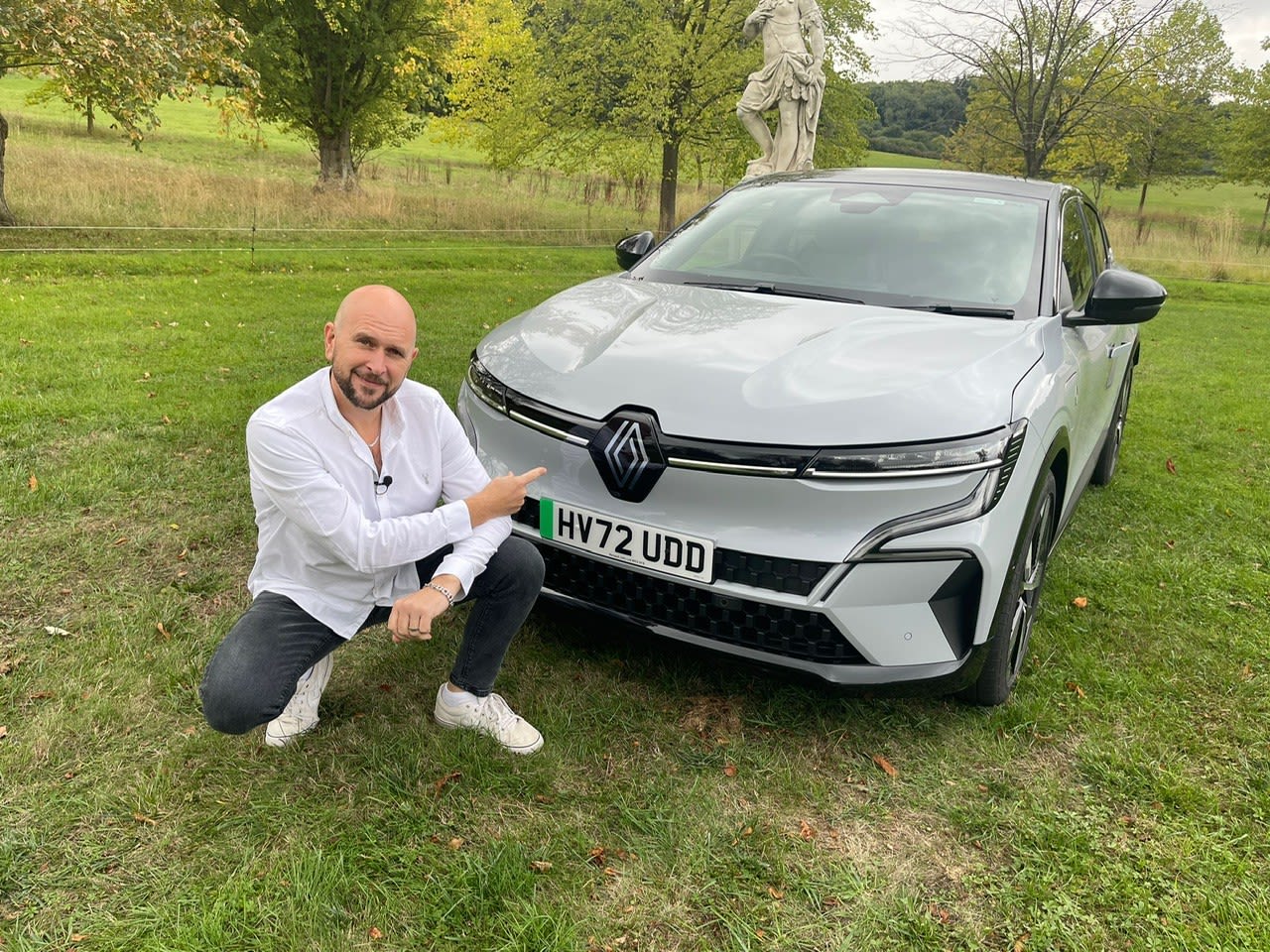
Skoda Enyaq Coupe iV vRS Review

Introduction
The 21st century has thrown up a lot of unexpected things so far – and Skoda’s ascendency is right up there with them.
But the plucky Czech manufacturer has done it – and deserves it. The forgettable cars are long gone, and, gradually, Skoda has climbed the automotive hierarchy, rivalling just about anything that isn't a premium brand.
Select's rating score* - 4 / 5
At A Glance
Like many automakers, it has long since dabbled in SUVs and is now launching the Enyaq Coupe iV vRS. For the uninitiated, the iV means it’s electric, while the vRS means this is the ultra-fast performance version.
If it goes as well as it looks, we're on to a winner. The front features an aggressive stance, with a luminous grille fitted with LEDs which looks awesome in twilight hours. From a distance, it could be mistaken for a BMW X6.
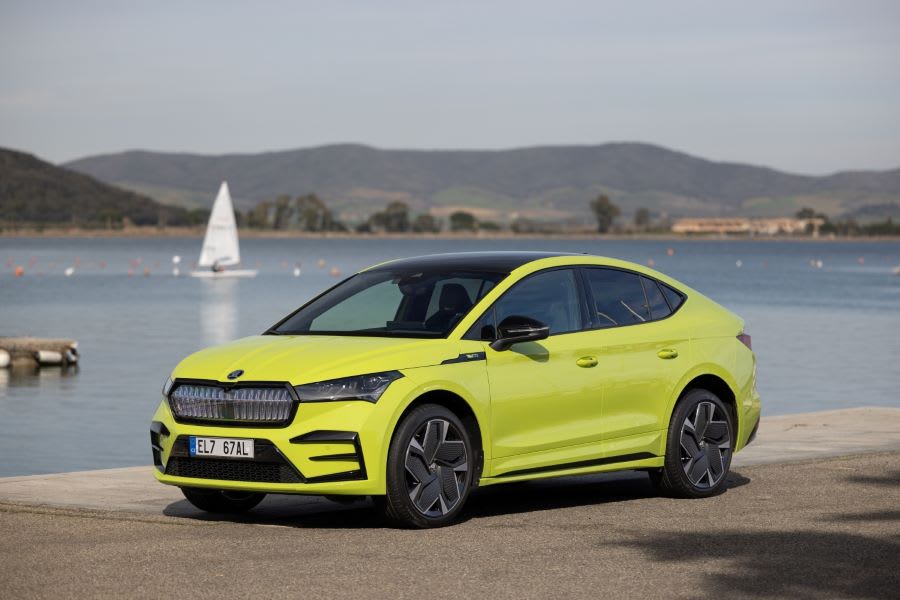
Despite our test car being ‘Hyper Green’ (that means fluorescent green), the colour black also has a dominant role to play. Why? Well, every styling detail, from the frame around the grille and the sinister-looking air intakes (albeit fake ones) at either side to the badging on the back and the mirrors – is black, which contrasts against the main body paintwork.
You can also have it in blue, orange, silver, red, white, black, and dark grey.
Around the side, there is more vRS badging. You also get sporty side skirts, and there’s a crease above the door handles, creating a shoulder towards the rear and accentuating the car’s shape.
At the rear, it is a clean and more minimalist design, with the back of the boot angling down at about 90-degrees from the boot lid, as if acting as a modest spoiler. The taillights taper towards the middle, leaving room for the spaced-out ‘SKODA’ badging. An angular indentation beneath the boot leaves space for the number plate, while there’s a black lower bumper, too.
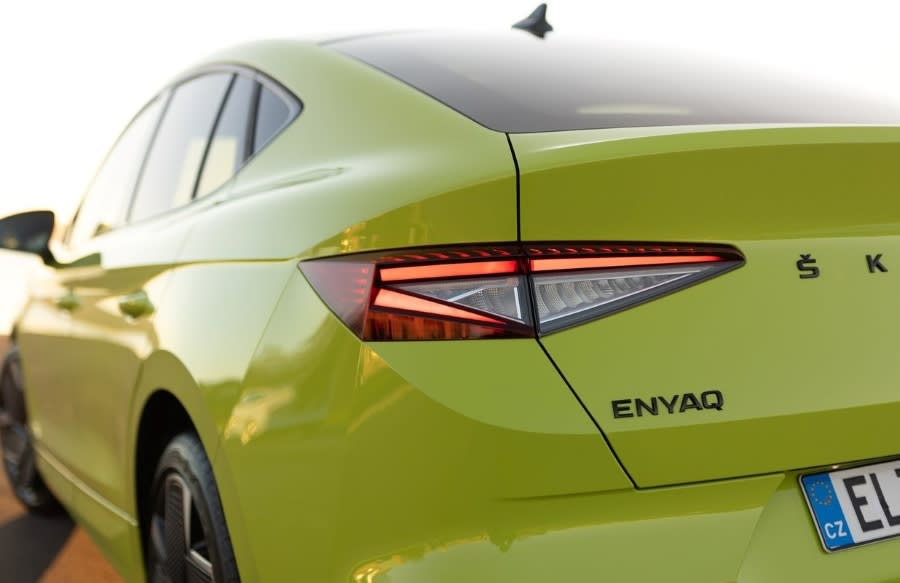
Key Features
The Skoda Enyaq Coupe iV vRS comes with 20-inch alloys (21-inch rims are also available), full LED matrix beam headlights and black perforated leather with grey piping. Plus, there is an electrically adjustable driver’s seat with memory function, power-adjustable lumbar support, and an electric tailgate.
In addition, there is a panoramic glass roof, although it is fixed in place and can’t be opened.
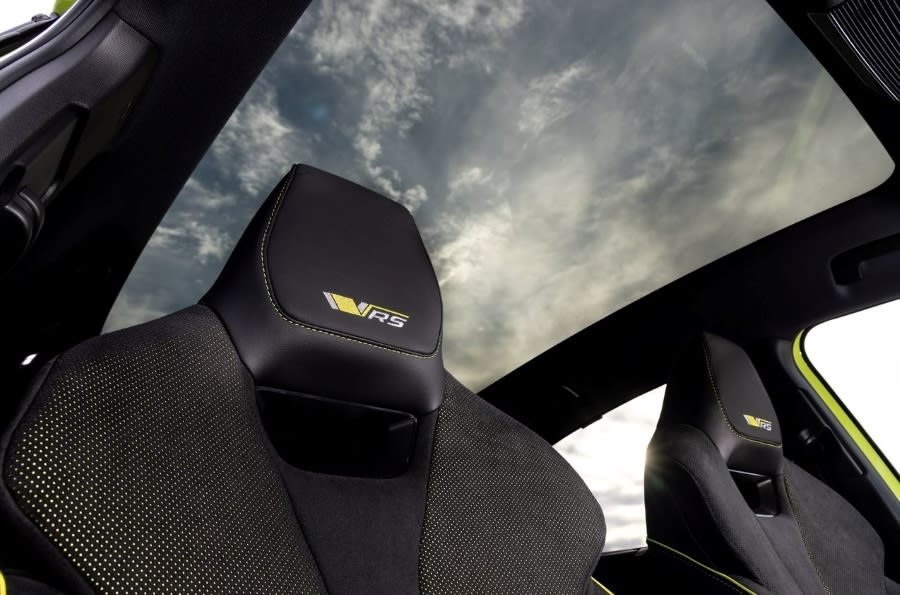
In terms of technology, the vRS comes with a 13-inch infotainment touchscreen with SatNav, Apple CarPlay/Android Auto, a DAB radio and a wireless phone charger.
It also features keyless entry, a start/stop system, plus a whole range of safety kit, which we will cover later.
The bonnet can be opened so that things like the washer fluid can be topped up. But there is no additional storage space there like you get in some electric cars.
There is only one powertrain to choose from, too. It is a dual motor that provides four-wheel drive and 299PS.
Several manufacturers have taken a standard SUV and created a coupe version by slicing a section of the roof off at the rear. The Enyaq is no different – it is based on the standard model, which lacks the sloping roofline.
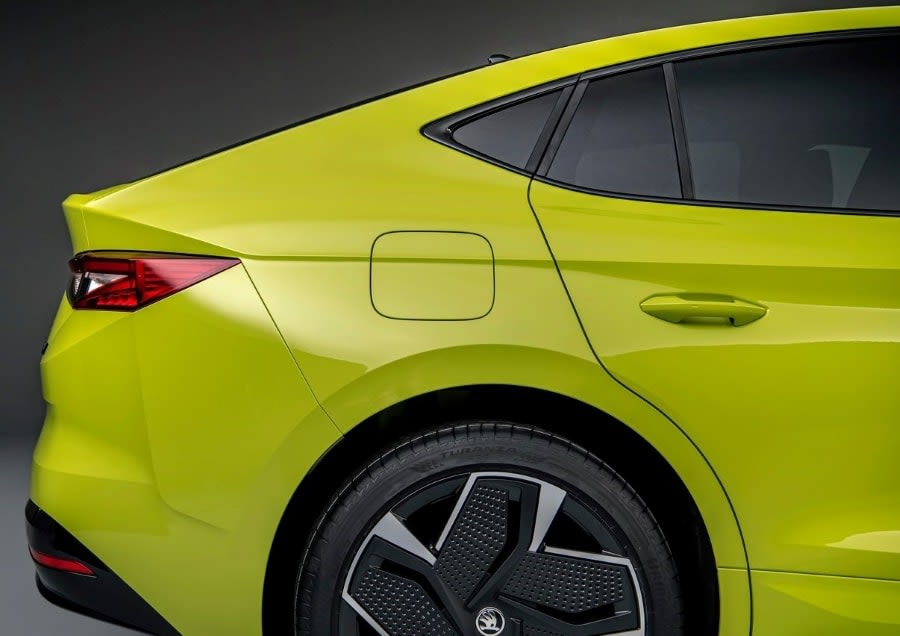
These coupe versions hardly ever look as good as the standard SUVs on which they are based. But Skoda has done such an excellent job of styling the Coupe that we think the vRS looks better than the stock Enyaq SUV.
And, regardless of which one you choose, as a bonus, if you open the doors, you get access to a pull-out umbrella, which slides out from inside the door. Nothing new to Skodas, of course – the manufacturer has provided this feature for years. But it’s always a nice touch, given you get the same thing as standard on a Rolls-Royce.
Range & Batteries
Skoda provides a 77kWh battery with a claimed range of up to 312 miles. We've pulled together a useful guide to help you figure out just what kWh and kW really mean.
That is about on a par with the Ford Mustang Mach-E GT, which is more expensive.
It is also not far off a Tesla Model X - which is a lot pricier.
For more information, have a read of our complete guide to electric car range!
Performance & Drive
The stats of the vRS are pretty impressive for a big car. It does nought to 62mph in 6.5-seconds, producing 460nm of torque, heading on to a top speed of 112mph.
The top-end may seem low, but not many electric cars are capable of the full beans traditional top speed of 155mph.
As expected, the vRS accelerates vigorously if you floor it, and you can feel the tyres gripping as the electric motors transfer their power onto the road.
It is exhilarating to go in a straight line, especially in Sport mode, which makes the most of the power. But any setting will still leave you with a smile on your face.
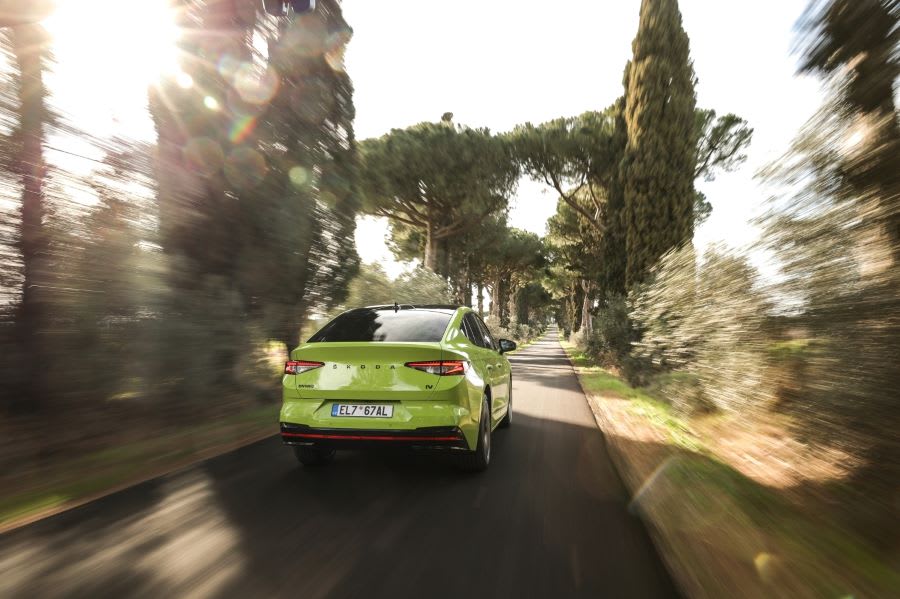
The Coupe’s ride isn’t bad, although in Sport, it is a little less comfortable - and the suspension is a bit unforgiving on bumpier roads. But then you would use a different setting to make things slightly less strenuous on your spine. Sticking with the 20-inch wheels rather than our test vehicle's 21-inch rims is likely preferable for most. There is also an Individual mode, which means you can choose a setup that suits you. Therefore, this should mean there is a selection to suit all driving tastes.
The optional adaptive suspension, which our vehicle is fitted with, also makes a noticeable difference. As a result, the ride can sometimes feel bouncy, but in an absorbing rather than bone-rattling way.
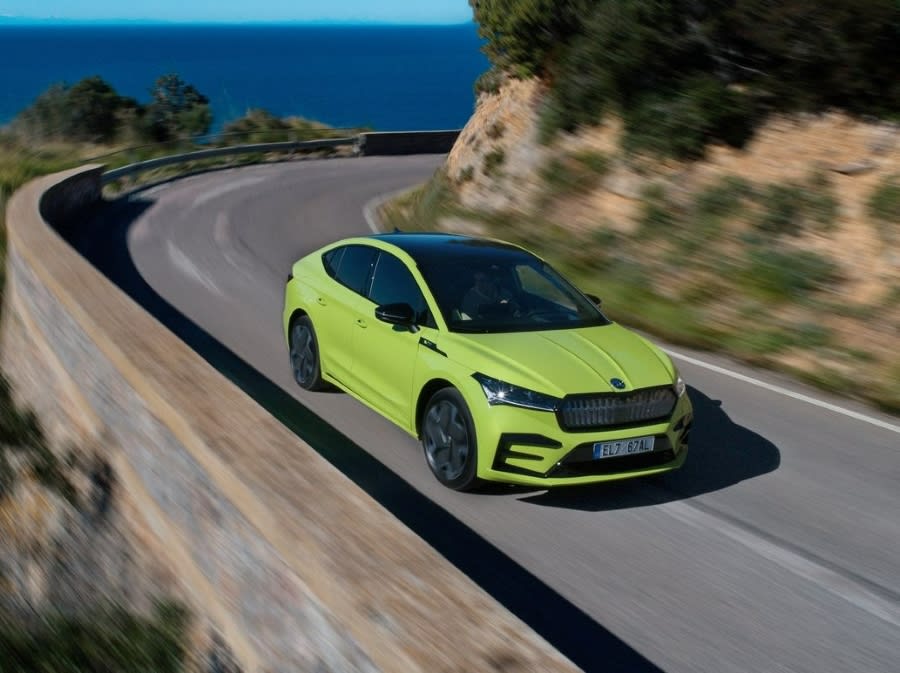
You feel like there is plenty of adherence going around corners, thanks to the four-wheel drive. But the weight of the vehicle becomes an issue. While it gives the confidence to test it to its limits, you don’t have to push too hard to reach those boundaries. As a result, take it a notch too far, and you will find it is reluctant to turn in on entry. And then you will discover the rear is too eager to push itself around on the exit.
Nevertheless, despite its sporty characteristics, it is unrealistic to expect a car like this to handle like a hot-hatch. It won’t be as nimble or agile as something like a Ford Focus ST or a Volkswagen Golf GTi.
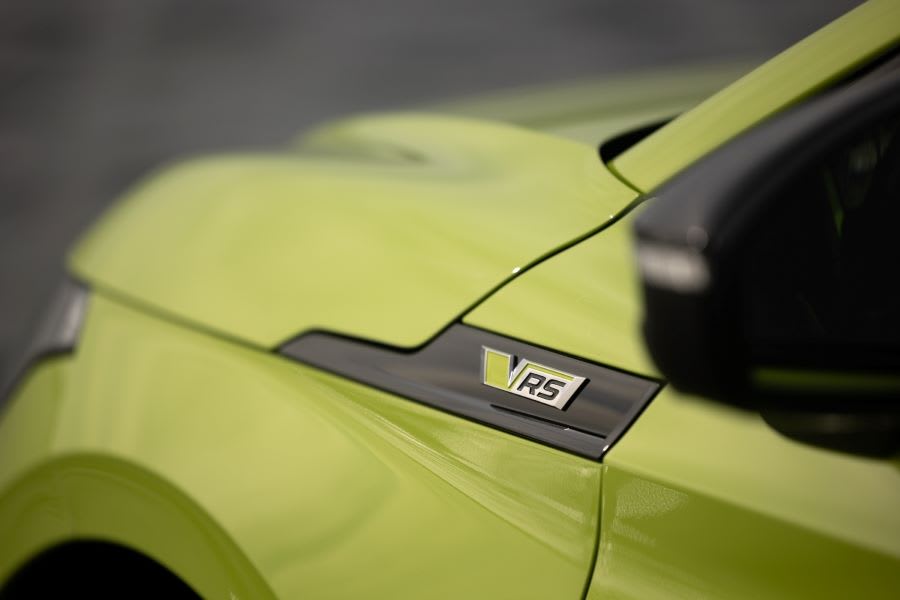
But a low centre of gravity, thanks partly to the batteries adding weight lower down, helps keep the vRS well-planted and stable. Considering its size, it handles well, and the chassis is well-tuned. Meanwhile, long journeys don't feel incredibly taxing either.
The steering is precise, too, feeling lighter in normal mode but heavier in sport mode, although it only provides an average amount of feedback.
The paddle shifters behind the wheel can be used to adjust the regenerative braking force, so one-pedal driving is possible. Furthermore, you can maximise the range by putting some charge back into the batteries under deceleration.
Charging
The Enyaq Coupe iV vRS’s maximum charging rate is 135kW, which means you can get from 10 to 80 per cent charge in a little over 35 minutes, ideal if you need a solution to not being able to charge at home.
A standard 7.2kW home wall box charger will take around 13 hours to get from empty to full. For more information on charging, we've created a helpful guide on picking your ideal charger!
Running Costs & Emissions
As this is a pure electric vehicle, there are no emissions to worry about on the vRS. If you're thinking charging cost, read our guide all about EV charging.
The interior isn’t completely vegan-friendly – the steering wheel is leather. However, Skoda says this is something it is working to address.
The good news is the vehicle only needs servicing every two years (or 18,750 miles, whichever comes first) to help keeps costs down.
Its zero emissions mean it is very favourable for road tax and company car tax, too.
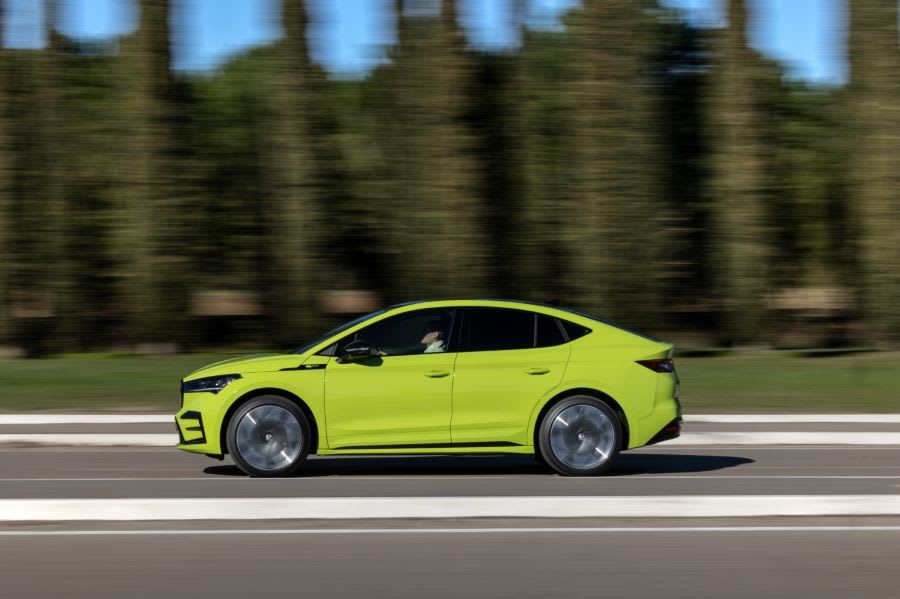
Interior & Technology
The interior looks stylish, well-designed, and well thought out. You get a two-tiered dashboard that is shaped attractively, bulking out in the centre to create more space for the front occupants but bringing air vents and switches within easy reach.
Skoda has provided a lovely steering wheel with some gloss black and silver styling on it. At the same time, the sports seats are inviting, with perforated patterns, and there is decent shoulder and lumbar support.
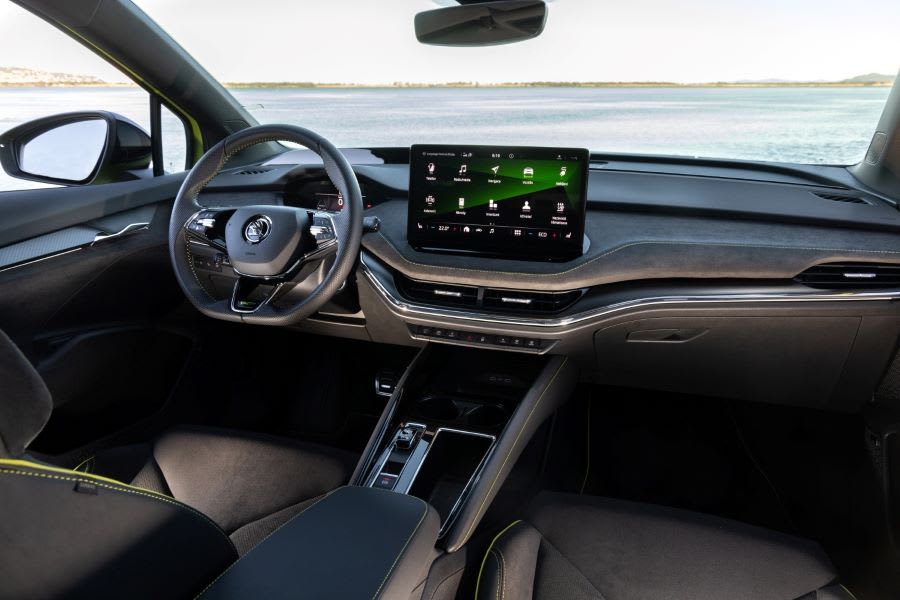
The infotainment screen shoots up from the centre of the dashboard. The system has been upgraded from Skoda’s previous iteration, so the screen is responsive and smoother. It does still lag a bit when moving the SatNav map around, but overall, it’s a big improvement and significantly better than what is offered in other cars.
It features a fiddly touch-sensitive slider to adjust the volume, but you can also do it easily from the steering wheel. Meanwhile, the cabin temperature can always be changed from the bottom of the screen, along with various shortcut buttons alongside it. These buttons remain in view regardless of which menu you are on.
The screen also displays the rear-view camera, although the resolution isn’t as sharp as we would like. But, generally, the system is easy to use, controlling most major features, including phone calls, music, and navigation. It also manages vehicle settings, charging information, assist systems, lighting, and other options.
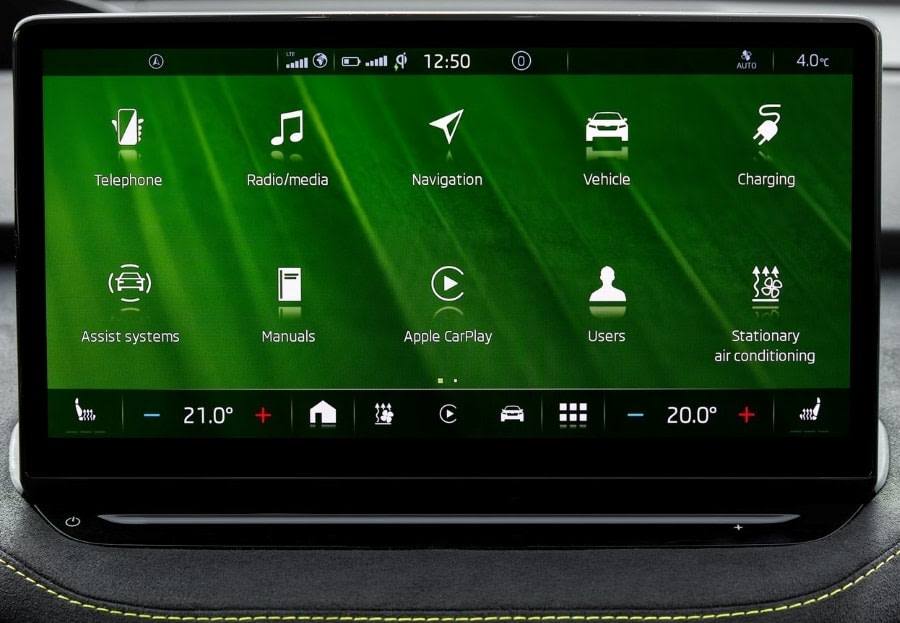
Some physical buttons can adjust the driving mode, toggle the parking assist mode, and turn on the window heating. Plus, you can operate the heated steering wheel via a switch on the wheel itself.
Other switchgear on the wheel adjusts the display of the digital cockpit, which is clear, easy to read and informative, although not exceptionally customisable. The optional head-up display is useful, featuring clear and concise information, including SatNav directions, which display arrows in front of you, making navigating as easy as can be.
The gear selector is so tiny you might miss it, but looks lovely, while there's an even smaller switch to operate the electronic parking brake next to it.
Practicality & Boot Space
The interior is a very civilised size, with excellent headroom in the front, despite the panoramic roof. So even taller drivers won’t struggle for room.
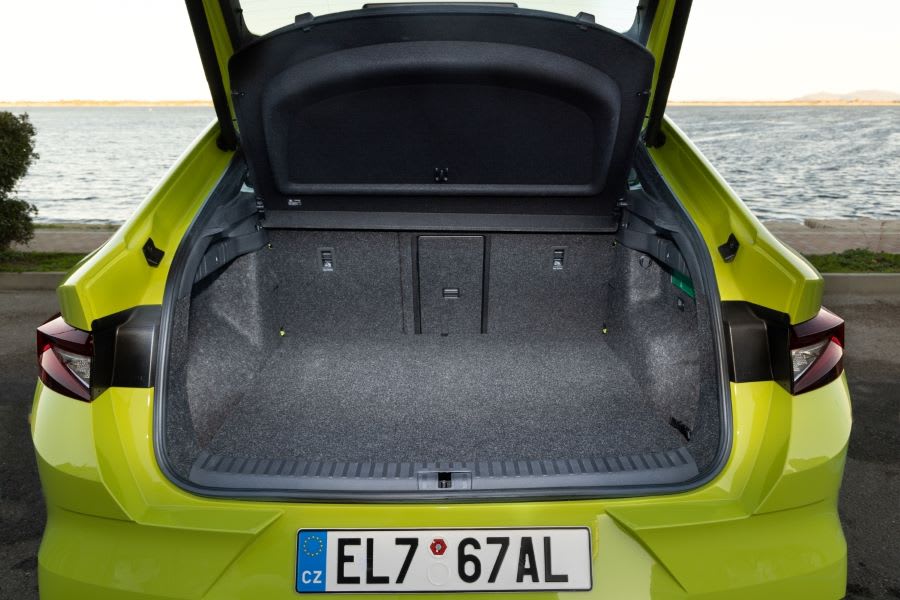
Finding a comfy driving position is easy, too, as the steering wheel has plenty of travel, as do the front seats, which are electrified on the driver’s side.
The centre console has a spacious cubby in it and a couple of removable plastic trays, helping to keep things organised.
In the rear, there are sunshades to cover both door windows. And there is plenty of space as the front seats are kept as slender as possible in terms of thickness. This means extra legroom for the rear-seat passengers.4
The sloping roofline inevitably compromises the rear headroom, but most passengers won’t grapple for space.
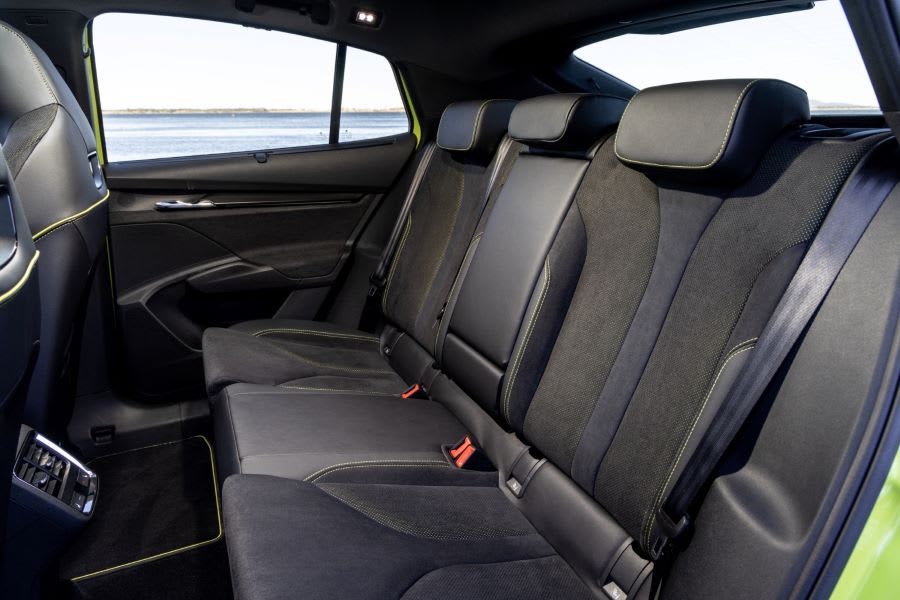
The rear seats aren’t adjustable, but they can be folded down from inside and via levers in the boot, which cause the seats to fall automatically. They fold in a 60:40 split, boosting the boot capacity to 1,610-litres from 570-litres. The latter figure is only a 15-litre reduction on what you get in the full-size Enyaq SUV.
Charging cables are stored in a special bag that sits at the side of the boot. However, there is more storage beneath the boot floor where they can also be kept if you need to make use of every available inch of space.
In the centre console, there are two cupholders with space for a wireless phone charger in front. Meanwhile, in the rear, two cupholders can be found in the centre armrest, which folds down from the middle seat if it is not in use.
Because there is no driveshaft creating a hump in the floor, the room is instead taken up with an extra cubby space for additional storage. Mind you; it can be easily removed and stored in the boot if you would rather have a flat floor instead and the extra room for your feet.
Safety
The full-size Skoda Enyaq SUV was tested in 2021 and earned a five-star rating, which is also valid for the Coupe.
It scored impressively well, with a 94 per cent rating for adults, 89 per cent for children and 82 per cent for safety assists.
Standard safety tech includes lane assist, front assist with assisted automatic braking, front and rear parking sensors and a tyre pressure monitor. You also get a driver alert system, dynamic road sign display, adaptive cruise control (with ‘follow-to-stop’), speed limiter, blind-spot detection, and crew protect assist.
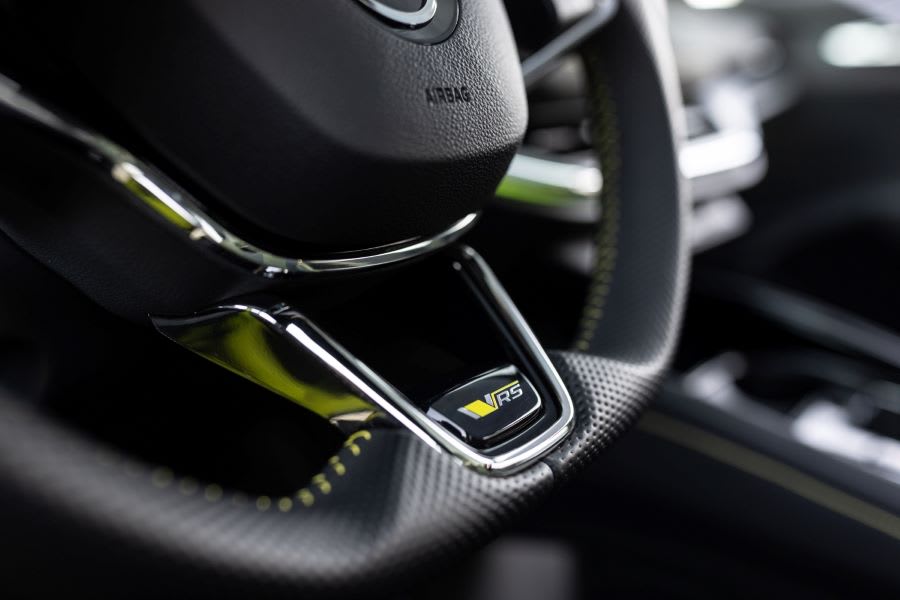
Options
If you want bigger alloys, you can upgrade from 20 to 21-inches for a few hundred pounds.
A Transport Package, which provides the rear seat backrest release and a variable boot floor, is a small amount extra, too.
You can also opt for Travel Assist Plus, which includes emergency assist, lane assist plus, as well as narrow lane assist and urban evasive steering support.
Climate Package Plus costs just a few hundred notes and adds heated front and rear seats and windscreen.
Comfort Seat Package Plus costs slightly more and adds electrically adjustable front seats and motorised lumbar support to the passenger side. These features are already standard on the driver’s side – but the package also adds a driver seat massage function.
Refreshingly, you can have most of the available body colours without paying extra, although red and orange metallic will cost you more.
Drive Sport Package Plus adds dynamic chassis control and additional shock absorption for a reasonable sum, while the head-up display is also available with the Infotainment Package Plus.
The rear-seat blinds and rear USB-C ports can be added with the Family Package Basic, while an upgraded Canton sound system is also available for a fee.
Rival Cars
The Enyaq Coupe iV vRS is built on the same platform as Volkswagen’s ID.4 and the Audi Q4 e-Tron. It will hope to rival the excellent Hyundai Ioniq 5, too.
Despite the price point being north of £50k, the Skoda could offer a cheaper leasing alternative to those who don’t want to spend more leasing a BMW X6 or a Mercedes-Benz GLC Coupe.
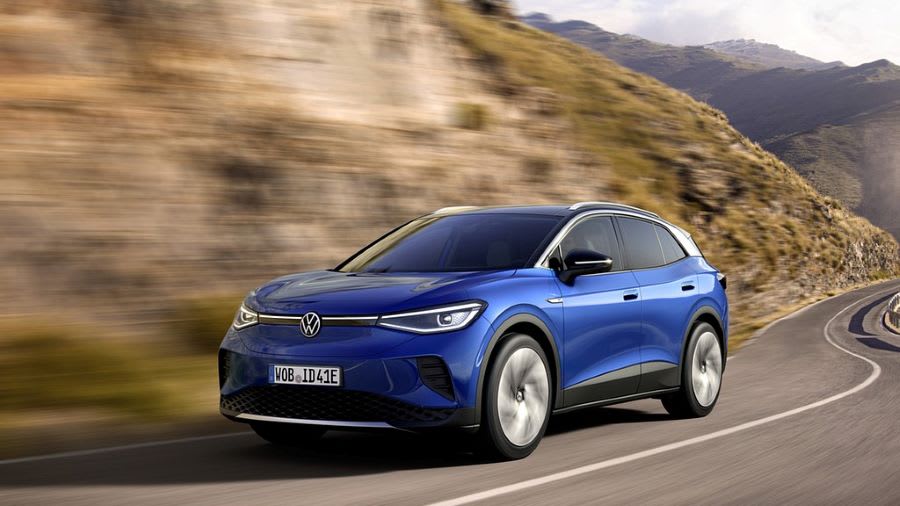
Verdict & Next Steps
Overall, the Skoda Enyaq Coupe iV vRS is quirky and full of personality with a good blend of being both comfortable and decent to drive.
However, we foresee a problem.
You see, a manufacturer rarely releases its super-fast performance version before the standard version. But that is precisely what Skoda is doing here, as the standard Enyaq Coupe iV won’t be coming to the UK until the autumn of 2022.
We suspect part of the reason is that the standard car is just as good – albeit not as sporty-looking. But then, given that it is likely to be significantly cheaper than the vRS version, it isn't easy to make a case for splashing out on the vRS version. This is a car you must want, then. Just like nobody leases a BMW M4 over a standard 4-Series for any other reason than they want an M4 – the same will undoubtedly apply here.
As a result, we don't expect to see many of the vRS versions on the road, which is a shame, as it has got a lot going for it.
But at least that creates one benefit of having one: it will undoubtedly be very exclusive.
Where to next?
View our latest Skoda Enyaq iV Coupe Leasing Deal - from just £569.26 per month inc VAT**
Looking for a great leasing deal? Check out our incredible range of Special Offers
New hatchback? Read our latest Car Reviews and find the right model for you
Want to know more about leasing? Take a look at our comprehensive Leasing Guides
Interested in everything motoring? Why not catch up on all the latest Car Leasing News.
*Score based on Select’s unique meta score analysis, taking into account the UK’s top five leading independent car website reviews of the Skoda Enyaq iV Coupe
**Correct as of 27/04/2022. Based on 9 months initial payment, 5,000 miles over a 48 month lease. Initial payment equivalent to 9 monthly payments or £5,123.34 Ts and Cs apply. Credit is subject to status.
